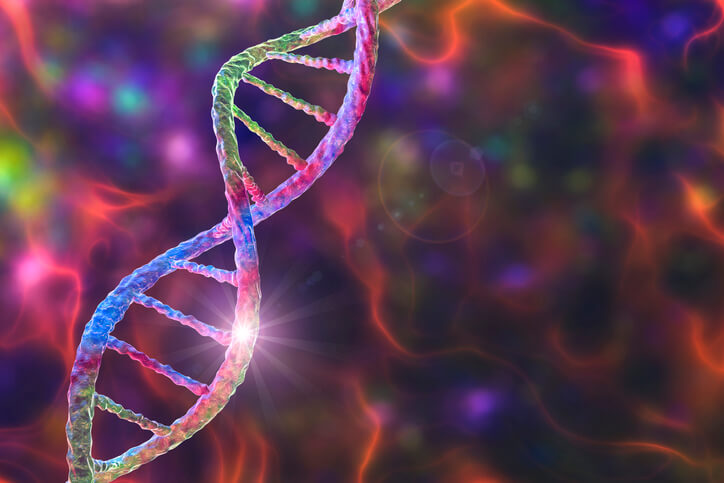
Giant Eyes: Axenfeld-Rieger Syndrome

This beautiful little girl has enormous and charming eyes due to the rare genetic disorder called as Axenfeld-Rieger Syndrome. It is an abnormal disorder that causes her pupils huge. While her big eyes look fascinating but it may cost her a lifetime of blindness.
Axenfeld-Rieger Syndrome is basically an eye disorder but in some cases, it can affect other parts of the body also. This condition is characterized by abnormalities in the front part of the eye known as the anterior segment. Such as the colored part of the eye (the iris), which may be thin or poorly developed. The iris usually has a single central hole called a pupil through which light enters the eyes. Patients suffering from this rare genetic disorder have a pupil that is off-center (corectopia) or extra holes in the iris that can look like multiple pupils (polycoria). This may also lead to cause damage to the cornea which is the covering of the eye.
In most of the patients, it was observed that they develop a condition called Glaucoma which is a condition in which pressure inside the eye increases. Glaucoma can occur at the infant stage or in most cases it often develops in late childhood or adolescence. In half of the population of patients, glaucoma is the main reason to cause blindness or vision loss.
The genetics behind it:
The scientist has described the three types of Axenfeld-Rieger Syndrome which are numbered type 1, type 2, and type 3 respectively. It has an estimated prevalence of 1 in 200,000 people.
This condition is inherited in an autosomal dominant pattern, which means one copy of the altered gene in each cell is sufficient to cause the disorder.
This syndrome is mainly caused by the mutation occurring in two types of genes, PITX2 and FOXC1. Mutation in the gene PITX2 causes type 1 and mutation in the gene FOXC1 causes type 2. Whereas, the gene associated with type 2 lies on chromosome 13, but it is yet to be identified. The proteins produced by these two genes are transcription factors that get attached to the DNA and will help in controlling the activity of other genes. These transcription factors play a crucial role during embryonic development, especially in the formation of structures in the anterior segment of the eye. And it is active before birth.
The mutation in any of these two genes will lead to the abnormal functioning of other genes as well which are needed in the normal development of other body parts. Impaired regulation of these two genes ultimately leads to problems in the formation of the anterior segment of the eye and also other parts of the body. This is the main characteristic feature of Axenfeld-Rieger Syndrome. Affected individuals with PITX2 gene mutations have more abnormalities affecting the other parts of the body more than the eye. Whereas the rate of abnormalities in other body parts is lower in patients suffering from FOXC1 gene mutation. In some cases, patients do not have any of these two mutations. The reason for the same is yet to be identified.
Signs and Symptoms:
The patients suffering from Axenfeld-Rieger Syndrome shows multiple abnormalities since the mutation in the genes also affects the other parts of body including eyes.
There are two groups of Axenfeld-Rieger Syndrome:
- Ocular symptoms. Symptoms that affect your child’s eyes.
- Systemic symptoms. Symptoms that develop in other parts of your child’s body.
Ocular symptoms of Axenfeld-Rieger syndrome include:
- Thin or underdeveloped irises.
- Off-centered pupils or pupils that are out of their usual place.
- Issues with the cornea.
Systemic symptoms of Axenfeld-Rieger syndrome include:
- Issues with their skull. Hypertelorism (wide-set eyes) and a flattened face shape. It can also cause babies to have an abnormally broad, prominent forehead.
- Dental symptoms. Babies suffering from this syndrome are sometimes born with unusually small teeth. They might be missing some teeth too.
- Extra skin. The child might develop extra folds of skin on their abdomen near their belly button. Babies assigned male at birth sometimes also develop extra skin on the underside of their penis.
- Narrow urethra or anal openings.
- Heart defects.
- Issues with their pituitary gland. Babies born with Axenfeld-Rieger syndrome can sometimes have delayed growth.
Diagnosis:
Ophthalmologist will be able to diagnose the syndrome. It is usually occurs at the time of birth if any visual abnormality can be seen with their eyes or may be other body parts. Few tests are included after primary inspection of possible syndrome such as:
- A visual acuity test to see if child’s vision is compromised.
- Gonioscopy to check for glaucoma.
- DNA tests and genetic testing to confirm if your child has the mutations that cause Axenfeld-Rieger syndrome.
Treatment:
Axenfeld-Rieger syndrome treatment depends on where your child has symptoms and what (if any) issues their symptoms cause.
Follow The Scientific Reporters for more such interesting updates!






